Sustainable craft tricks
✍ 1 June 2023

Environmental protection and sustainability seem to be important concerns for almost everyone. But in my private environment, I rarely hear arguments about environmental protection. I think I heard them most often when I was a student, in the 1980s. Over time, I have learned to use materials from garbage or nature... Read more about sustainable craft tricks
Environmental protection and sustainability seem to be important concerns for almost everyone. But in the everyday discussions in my private environment, I rarely hear arguments about environmental protection. I think I heard environmental arguments most often when I was a student, in the 1980s. Now cost and efficiency seem to be the only important arguments.
Is it the zeitgeist or age? Perhaps students and young people are more idealistic or naive than people who have had to work for a living for a few years? Over time, I have learned to use materials that you find in garbage or in nature in my everyday life, so that I have to shop less and protect the environment. Here you can find some tricks to do it. I'll expand the page over time with more tricks; there is a link to this page in the menu (the last link)!
Connecting tubes and pipes

This is our water tank 4a. It provides several neighbors with water. If possible the neighbors help me if there is something to do.
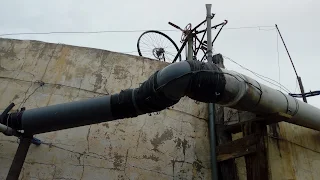
That is the overflowing pipe of the water tank. In the last days we connected it with our water system, so that we can use the overflowing water. But how to do it?
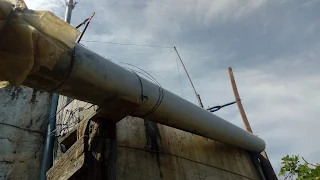
We need to connect a pipe of approx 140mm diameter...

...with a tube of 75mm diameter.
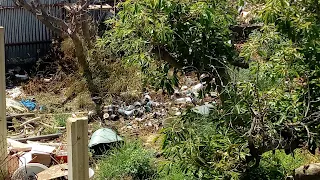
A neighbor gave us several connectors that halfway connected the tubes. Many such parts are stored with him. But how to connect them so that they hold and become waterproof?
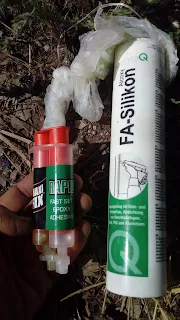
At first we considered using proxy glue and silicone. But that's expensive and bad for the environment, so we didn't use it.

For my solution, you need bicycle inner tubes, wire and some knowledge how to handle with wire. I collected the inner tubes and the wire from the garbage over time, I learned the skills from friends.
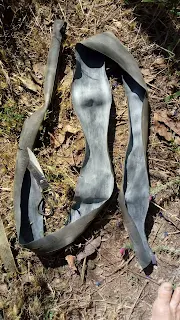
I cut open the tubes, wrap them tightly around the splice several times and secure with wire.
And it works! There is only about one drop per minute, even if the pipe is full of water. Admittedly, we would have saved a lot of time if we had bought a suitable connection part.

Finally I put some plastic around the connections and fix it with wire. This protects the UV-sensitive bicycle tubes from solar radiation. The plastic comes from a former greenhouse. Thus, all parts are from the garbage - a free and environmentally friendly solution!
You will find here in future:
- How to turn an old washing machine and an old bicycle into a bicycle washing machine with no electricity consumption
- How to transport more by bike with bike boxes
- How to organise screws, nails, garden seeds and many other odds and ends - neatly and beautifully with hanging screw jars
- How to make strong string or rope from hair, grass, fibres, etc.
- 3 tricks for using wire
- How to build a rainproof roof from palm leaves
Comments